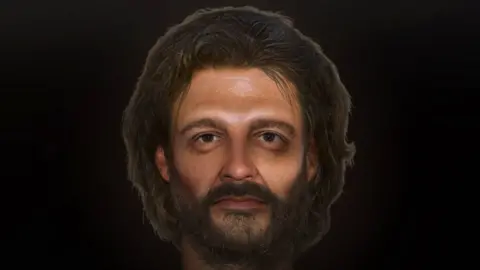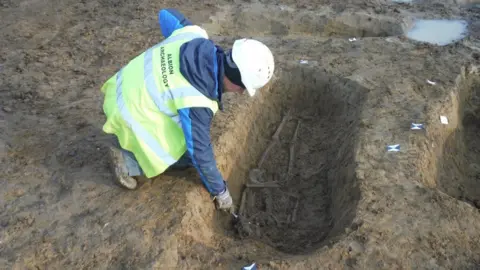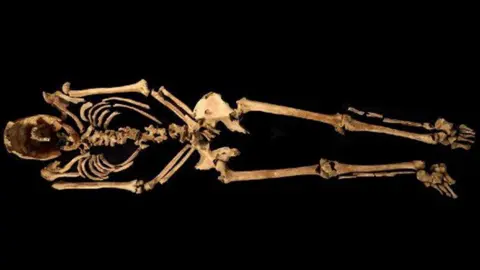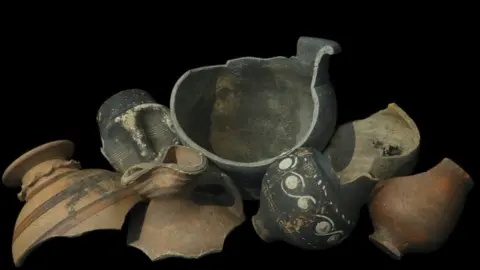Face of Fenstanton Roman crucifixion victim revealed
 Impossible Factual/BBC
Impossible Factual/BBCThe face of the victim of a Roman crucifixion has been reconstructed for the first time, experts have said.
The skeleton of a man was discovered with a nail through his heel in Fenstanton, Cambridgeshire, in 2017.
Cambridge University bone specialist Corinne Duhig said it was an "almost unique" find at what was a previously unknown Roman settlement.
The reconstruction of the man's face was revealed in a BBC Four programme, which explored details of his life.
 Albion Archaeology
Albion ArchaeologyMs Duhig said: "This man had such a particularly awful end that it feels as though by seeing his face you can give more respect to him."
Prior to the Fenstanton discovery, the only other Roman crucified remains discovered had been in Israel, according to Ms Duhig, an osteologist from the university's Wolfson College.
She said: "The lucky combination of good preservation and the nail being left in the bone has allowed me to examine this almost unique example when so many thousands have been lost."
 Albion Archaeology
Albion ArchaeologyOther injuries were found, suggesting the man had suffered before he died, and his legs had signs of infection or inflammation caused by either a systemic disorder or by being bound or shackled.
Analysis of the remains revealed he spent his whole life in the Cambridgeshire area, and most likely had brown hair and eyes.
It also suggested he was a manual worker, possibly working on processing bone marrow for candles or soaps from the many animal bones found on the site.
 Impossible Factual/BBC
Impossible Factual/BBCCrucifixion was a particularly brutal death, most famously used for Jesus Christ, but also in use for centuries before and after.
Initially it was used for traitors and slaves, but in the 3rd Century, with the extension of Roman citizenship, its use was expanded.
Ms Duhig said: "He was tortured yet given over to his population to have an absolutely normal burial."
 Albion Archaeology/Adam Williams
Albion Archaeology/Adam WilliamsThe facial reconstruction was undertaken by Prof Joe Mullins of George Mason University, Virginia, USA, who said it was "by the far the most interesting skull I've worked on in my career".
The settlement was discovered by Bedford-based Albion Archaeology, which began its excavation in 2017 ahead of a planned housing development.
Archaeologists found five 3rd and 4th Century cemeteries where 40 adults and five children were buried, some from the same families.
The Cambridgeshire Crucifixion can be watched on BBC iPlayer.

Follow East of England news on Facebook, Instagram and X. Got a story? Email [email protected] or WhatsApp 0800 169 183
